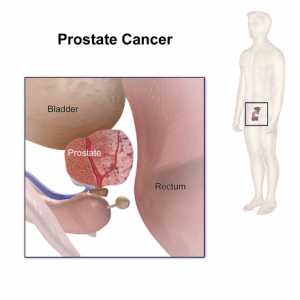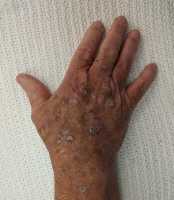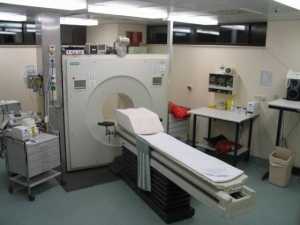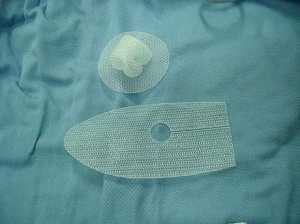Drinking just one bottle of beer increases your chances of being in an automobile accident by 46 percent. ...
Physical Activity Could Reduce Risk of Parkinson disease, esp. in Men
 Fudi Wang, M.D., Ph.D.
Qiushi Chair Professor
Nutrition Discovery Innovation Center
School of Public Health/School of Medicine
Zhejiang University
Hangzhou China
MedicalResearch.com: What is the background for this study? What are the main findings?
Response: Parkinson disease (PD) is the second most common neurodegenerative disease affecting approximately 10 million people around the world. To date, the cause of PD remains poorly understood. It is reported that 90% PD cases have no identifiable genetic cause. What’s worse, few therapeutic advances for the treatment of PD have been made in the past decades. Nevertheless, growing prospective longitudinal studies shed lights on the potential beneficial effect of lifestyle factors on reducing the risk of developing Parkinson disease. In this study, we performed a a dose-response meta-analysis of more than half a million participants.
We found that physical activity, particularly moderate to vigorous physical activity, could significantly reduce PD risk.
(more…)
Fudi Wang, M.D., Ph.D.
Qiushi Chair Professor
Nutrition Discovery Innovation Center
School of Public Health/School of Medicine
Zhejiang University
Hangzhou China
MedicalResearch.com: What is the background for this study? What are the main findings?
Response: Parkinson disease (PD) is the second most common neurodegenerative disease affecting approximately 10 million people around the world. To date, the cause of PD remains poorly understood. It is reported that 90% PD cases have no identifiable genetic cause. What’s worse, few therapeutic advances for the treatment of PD have been made in the past decades. Nevertheless, growing prospective longitudinal studies shed lights on the potential beneficial effect of lifestyle factors on reducing the risk of developing Parkinson disease. In this study, we performed a a dose-response meta-analysis of more than half a million participants.
We found that physical activity, particularly moderate to vigorous physical activity, could significantly reduce PD risk.
(more…)Stress-Induced Cortisol During Pregnancy Linked to Smaller Male Babies
Folate Metabolites Linked To Increased Risk of Autism Spectrum Disorder
MedicalResearch.com Interview with: [caption id="attachment_44726" align="alignleft" width="200"] Prof., Hahn[/caption] Juergen Hahn PhD, Professor and Department Head Department of Biomedical Engineerin Department of Chemical &...
Most Patients Who Carry BRCA1/2 Pathogenic Variants Are Unaware
Mothers of Infants Born With Major Birth Defect are at Increased Risk of Cardiovasular Disease
High-Risk Gleason 5 Prostate Cancers Not Resistant to Androgen Deprivation Therapy
CDC: Homicide Rates At Least 10 Times Higher For Young Adult Blacks Than Whites
Medicare Spends Hundreds of Millions Annually to Treat Precancerous Skin Lesions
 Howa Yeung, MD
Assistant Professor of Dermatology
Emory University School of Medicine
Atlanta, GA 30322
MedicalResearch.com: What is the background for this study? Would you briefly explain what is meant by actinic keratoses?
Response: Actinic keratoses are common precancerous skin lesions caused by sun exposure. Because actinic keratoses may develop into skin cancers such as squamous cell carcinoma and basal cell carcinoma, they are often treated by various destructive methods. We used Medicare Part B billing claims to estimate the number and cost of treated actinic keratoses from 2007 to 2015.
MedicalResearch.com: What are the main findings?
Response: While the number of Medicare Part B beneficiaries increased only moderately, the number of actinic keratoses treated by destruction rose from 29.7 million in 2007 to 35.6 million in 2015. Medicare paid an average annual amount of $413.1 million for actinic keratosis destruction from 2007 to 2015. Independently billing non-physician clinicians, including advanced practice registered nurses and physician assistants, are treating an increasing proportion of actinic keratosis, peaking at 13.5% in 2015.
MedicalResearch.com: What should readers take away from your report?
Response: Readers should understand that the burden of actinic keratosis treatment is increasing in the Medicare population. There is also an increasing proportion of actinic keratoses being treated by advanced practice registered nurses and physician assistants. (more…)
Howa Yeung, MD
Assistant Professor of Dermatology
Emory University School of Medicine
Atlanta, GA 30322
MedicalResearch.com: What is the background for this study? Would you briefly explain what is meant by actinic keratoses?
Response: Actinic keratoses are common precancerous skin lesions caused by sun exposure. Because actinic keratoses may develop into skin cancers such as squamous cell carcinoma and basal cell carcinoma, they are often treated by various destructive methods. We used Medicare Part B billing claims to estimate the number and cost of treated actinic keratoses from 2007 to 2015.
MedicalResearch.com: What are the main findings?
Response: While the number of Medicare Part B beneficiaries increased only moderately, the number of actinic keratoses treated by destruction rose from 29.7 million in 2007 to 35.6 million in 2015. Medicare paid an average annual amount of $413.1 million for actinic keratosis destruction from 2007 to 2015. Independently billing non-physician clinicians, including advanced practice registered nurses and physician assistants, are treating an increasing proportion of actinic keratosis, peaking at 13.5% in 2015.
MedicalResearch.com: What should readers take away from your report?
Response: Readers should understand that the burden of actinic keratosis treatment is increasing in the Medicare population. There is also an increasing proportion of actinic keratoses being treated by advanced practice registered nurses and physician assistants. (more…)Factor in Quality of Life When Deciding Radiotherapy vs Surgery in Patients With Oropharyngeal Cancer
MedicalResearch.com Interview with: [caption id="attachment_44703" align="alignleft" width="122"] Dr. Sher[/caption] Dr. David Sher MD MPH Radiation Oncology, Harold C. Simmons Comprehensive Cancer Center UTSouthwestern Medical Center Associate...
Could a Low-Gluten Diet During Pregnancy Protect Offspring from Diabetes?
 Knud Josefsen, senior researcher
Bartholin Institute, Rigshospitalet,
Copenhagen K, Denmark
MedicalResearch.com: What is the background for this study? What are the main findings?
Response: In a large population of pregnant women, we found that the risk of the offspring being diagnosed with type 1 diabetes before the age of 15.6 years (the follow up period) was doubled in the group of women ingesting the highest amounts of gluten (20-66 g/day) versus the group of women ingesting the lowest amounts of gluten (0-7 g/day). For every additional 10 grams of gluten ingested, the risk for type 1 diabetes in the child increased by a factor of 1.31.
It the sense that it was a hypothesis that we specifically tested, we were not surprised. We had seen in animal experiments that a gluten-free diet during pregnancy protected the offspring from diabetes, and we wanted to see if we could prove the same pattern in humans. There could be many reasons why we would not be able to show the association, even if it was there (sample size, low quality data, covariates we could not correct for and so on), but we were off course pleasantly surprised that we found the association that we were looking for, in particular because it is quite robust (more…)
Knud Josefsen, senior researcher
Bartholin Institute, Rigshospitalet,
Copenhagen K, Denmark
MedicalResearch.com: What is the background for this study? What are the main findings?
Response: In a large population of pregnant women, we found that the risk of the offspring being diagnosed with type 1 diabetes before the age of 15.6 years (the follow up period) was doubled in the group of women ingesting the highest amounts of gluten (20-66 g/day) versus the group of women ingesting the lowest amounts of gluten (0-7 g/day). For every additional 10 grams of gluten ingested, the risk for type 1 diabetes in the child increased by a factor of 1.31.
It the sense that it was a hypothesis that we specifically tested, we were not surprised. We had seen in animal experiments that a gluten-free diet during pregnancy protected the offspring from diabetes, and we wanted to see if we could prove the same pattern in humans. There could be many reasons why we would not be able to show the association, even if it was there (sample size, low quality data, covariates we could not correct for and so on), but we were off course pleasantly surprised that we found the association that we were looking for, in particular because it is quite robust (more…)Could Household Cleaners Be Making Children Overweight?
Lowering Triglycerides and Cholesterol Could Reduce Heart Disease and Diabetes Risk
- Drugs that enhance the breakdown of circulating triglycerides by activating lipoprotein lipase (LPL) are in pre-clinical or early-clinical development.
- It is not known if these drugs will reduce heart attacks or diabetes risk when added to the current first line therapies (statins and other cholesterol-lowering agents).
- Studying this would require large randomised controlled trials, which are expensive (millions of GBPs) and time-consuming (years).
- Human genetic data can be used to provide supportive evidence of whether this therapy is likely to be effective by “simulating” a randomised controlled trial.
- Our study used naturally occurring genetic variants in the general population (study of ~400,000 people) to address this.
- Individuals with naturally-lower cholesterol due to their genetic makeup were used as model for cholesterol-lowering therapies (eg. Statins).
- Individuals with naturally-lower triglycerides due to genetic variants in the LPL gene were used as model for these new triglyceride-lowering therapies.
- We studied the risk of heart attacks and type 2 diabetes in people in different groups.
Asthma: Add-on Maintenance Treatment with FASENRA (benralizumab) Can Reduce Exacerbations
-
- BORA is a randomized, double-blind, parallel-group, Phase III extension, and is one of six Phase III trials in the WINDWARD program in asthma. The current analysis includes results for 1,926 patients from the two placebo controlled exacerbation trials, SIROCCO (48 week) and CALIMA (56 weeks). BORA provides evidence that add on maintenance treatment with FASENRA (benralizumab) resulted in a consistent safety profile over a second year of treatment, with no increase in the frequencies of overall or serious adverse events, and sustained efficacy in terms of reducing asthma exacerbations, and improving lung function and asthma symptoms. The BORA trial results could provide confidence to patients with severe eosinophilic asthma and physicians that the positive outcomes they may be seeing with benralizumab can be maintained over a second year of treatment.
- FASENRA, a different kind of respiratory biologic, has a strong clinical profile which includes the ability to show lung function improvement after the first dose, the potential to reduce – or even stop - oral steroid use, and the convenience of 8-week dosing (no other respiratory biologic offers this dosing). FASENRA is approved for add-on maintenance treatment of patients with severe asthma ages 12 years and older, and with an eosinophilic phenotype. FASENRA binds directly to the IL-5a receptor on an eosinophil and uniquely attracts natural killer cells to induce apoptosis, or cell death. Other biologics currently available are anti-IL5s – a passive approach that primarily acts to block differentiation and survival of the eosinophil.
Women Who Breast Feed Longer Likely to Have More Children
Amyloid Targeting Therapy More Likely To Be Effective Early in Alzheimer’s Disease
Cannabinoid Drugs May Slightly Increase Pain Threshold
 Martin De Vita, MS
Doctoral Candidate
Clinical Psychology Department
Syracuse University
MedicalResearch.com: What is the background for this study? What are the main findings?
Response: Despite widely held beliefs that cannabis is effective for pain relief, experimental trials have produced mixed results. As result, the analgesic properties of cannabinoid drugs have remained poorly understood. We aimed to clarify these findings by extracting data from every available experimental pain study and analyzing the results as a whole. We found that numerous aspects of pain were being influenced in different ways. We found that cannabinoid drugs did not significantly reduce the intensity of experimental pain, but they did produce small-sized reductions in pain unpleasantness. Cannabinoids produced significant analgesic effects on pain threshold and tolerance. There was no significant effect of cannabinoids on mechanical hyperalgesia. (more…)
Martin De Vita, MS
Doctoral Candidate
Clinical Psychology Department
Syracuse University
MedicalResearch.com: What is the background for this study? What are the main findings?
Response: Despite widely held beliefs that cannabis is effective for pain relief, experimental trials have produced mixed results. As result, the analgesic properties of cannabinoid drugs have remained poorly understood. We aimed to clarify these findings by extracting data from every available experimental pain study and analyzing the results as a whole. We found that numerous aspects of pain were being influenced in different ways. We found that cannabinoid drugs did not significantly reduce the intensity of experimental pain, but they did produce small-sized reductions in pain unpleasantness. Cannabinoids produced significant analgesic effects on pain threshold and tolerance. There was no significant effect of cannabinoids on mechanical hyperalgesia. (more…)USPSTF: Behavior-Based Weight Loss Interventions Associated with Weight Loss and Lower Risk of Diabetes
Mediterranean Diet Linked To Stroke Risk Reduction in Women
 Professor Phyo Kyaw Myint MBBS MD FRCP(Edin) FRCP(Lond)
Clinical Chair in Medicine of Old Age
Academic Lead: Ageing Clinical & Experimental Research &
Director of Clinical Academic Training Development
The Lead Academic, Aberdeen Clinical Academic Training (ACAT) Programmes
School of Medicine, Medical Sciences & Nutrition
College of Life Sciences & Medicine, University of Aberdeen
MedicalResearch.com: What is the background for this study? What are the main findings?
Response: While Mediterranean Diet has been linked to reduced stroke risk it remains unclear
(1) its impact on populations within non-Mediterranean countries;
(2) its specific impact on different gender;
(3) the effect observed when using more robust dietary assessments; and (4) which specific components of the diet are most protective.
We therefore studied more than 23 thousand men and women (mainly British Caucasian) aged 40 years or older in Norfolk, UK as part of EPIC-Norfolk study and we found that the greater adherence to Mediterranean dietary pattern is linked to a significant reduction in stroke risk in women but not in men. This benefit was seen across the whole middle and older age population (particularly for women) regardless of their existing risk factors such as high blood pressure.
(more…)
Professor Phyo Kyaw Myint MBBS MD FRCP(Edin) FRCP(Lond)
Clinical Chair in Medicine of Old Age
Academic Lead: Ageing Clinical & Experimental Research &
Director of Clinical Academic Training Development
The Lead Academic, Aberdeen Clinical Academic Training (ACAT) Programmes
School of Medicine, Medical Sciences & Nutrition
College of Life Sciences & Medicine, University of Aberdeen
MedicalResearch.com: What is the background for this study? What are the main findings?
Response: While Mediterranean Diet has been linked to reduced stroke risk it remains unclear
(1) its impact on populations within non-Mediterranean countries;
(2) its specific impact on different gender;
(3) the effect observed when using more robust dietary assessments; and (4) which specific components of the diet are most protective.
We therefore studied more than 23 thousand men and women (mainly British Caucasian) aged 40 years or older in Norfolk, UK as part of EPIC-Norfolk study and we found that the greater adherence to Mediterranean dietary pattern is linked to a significant reduction in stroke risk in women but not in men. This benefit was seen across the whole middle and older age population (particularly for women) regardless of their existing risk factors such as high blood pressure.
(more…)Using Tau PET Scan to Distinguish Alzheimer Disease from Other Neurodegenerative Disorders
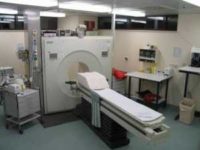 Rik Ossenkoppele -PhD
Lund University & VU University Medical Center
Oskar Hansson - Lund University
MedicalResearch.com: What is the background for this study? What are the main findings?
Response: [18F]flortaucipir is a relatively novel PET tracer that can be used to detect tau pathology in the living human brain. Previous studies have shown a robust signal in patients with Alzheimer’s disease, but in patients with other types of dementia the signal was more variable.
We aimed to assess the ability of [18F]flortaucipir PET to distinguish Alzheimer’s disease from other neurodegenerative disease in more than 700 study participants. T
he main finding was that [18F]flortaucipir discriminated Alzheimer’s disease patients from patients with other neurodegenerative diseases with high accuracy. Furthermore, [18F]flortaucipir PET outperformed established MRI markers and showed higher specificity than amyloid-β PET. (more…)
Rik Ossenkoppele -PhD
Lund University & VU University Medical Center
Oskar Hansson - Lund University
MedicalResearch.com: What is the background for this study? What are the main findings?
Response: [18F]flortaucipir is a relatively novel PET tracer that can be used to detect tau pathology in the living human brain. Previous studies have shown a robust signal in patients with Alzheimer’s disease, but in patients with other types of dementia the signal was more variable.
We aimed to assess the ability of [18F]flortaucipir PET to distinguish Alzheimer’s disease from other neurodegenerative disease in more than 700 study participants. T
he main finding was that [18F]flortaucipir discriminated Alzheimer’s disease patients from patients with other neurodegenerative diseases with high accuracy. Furthermore, [18F]flortaucipir PET outperformed established MRI markers and showed higher specificity than amyloid-β PET. (more…)Babies Born During Peak Pollen Season Have IgE in Cord Blood
 Bircan Erbas, Associate Professor
Reader/Associate Professor, Department of Public Health
School of Psychology & Public Health
La Trobe University
MedicalResearch.com: What is the background for this study?
Response: Around the world allergic respiratory diseases especially in children is a major problem. Studies have already shown that cord blood IgE can be used to identify children at risk for allergic diseases. Our previous research showed that exposure to high levels of outdoor pollen, especially grass, in the first couple of months after birth increased risk of allergic respiratory diseases. Based on this, we suspected that exposure to high grass pollen during pregnancy could be also important. (more…)
Bircan Erbas, Associate Professor
Reader/Associate Professor, Department of Public Health
School of Psychology & Public Health
La Trobe University
MedicalResearch.com: What is the background for this study?
Response: Around the world allergic respiratory diseases especially in children is a major problem. Studies have already shown that cord blood IgE can be used to identify children at risk for allergic diseases. Our previous research showed that exposure to high levels of outdoor pollen, especially grass, in the first couple of months after birth increased risk of allergic respiratory diseases. Based on this, we suspected that exposure to high grass pollen during pregnancy could be also important. (more…)Mouth Microbiome Linked to Childhood Obesity
MedicalResearch.com Interview with: [caption id="attachment_44637" align="alignleft" width="128"] Dr. Carnahan Craig[/caption] Dr. Sarah J.Carnahan Craig PhD Postdoctoral Scholar Makova Lab Biology Department Center for Medical Genomics Penn State...
Perfluorinated Chemicals as Emerging Environmental Threats to Kidney Health
MedicalResearch.com Interview with: John W. Stanifer, MD MSc Duke Health MedicalResearch.com: What is the background for this study? What are the main findings? Response:...
Experimental Cap Regrows Hair Using Photostimulation
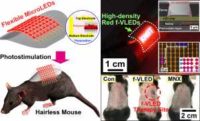 Han Eol Lee Ph.D.
Flexible and Nanobio Device Lab.
Department of Materials Science and Engineering
KAIST
MedicalResearch.com: What is the background for this study?
Response: Numerous people around the world have suffered from alopecia, which leads to aesthetic issues, low self-esteem, and social anxiety. With the population expansion alopecia patients from middle-age down even to the twenties, a depilation treatment is expected to have social and medical impacts on billions of patients. The causes of alopecia are generally known to be heredity, mental stress, aging, and elevated male hormone. Therapeutic techniques such as thermal, electrical, pharmacological, and optical stimulation have been proposed to treat hair problems. Among them, laser stimulation to hair-lost regions is a promising technique, activating the anagen phase and the proliferation of hair follicles without side effects. However, this laser stimulation technique has drawbacks, such as high power consumption, large size, and restrictive use in daily life (e.g., the difficulty of microscale spatial control and the long time exposure of high-energy laser). (more…)
Han Eol Lee Ph.D.
Flexible and Nanobio Device Lab.
Department of Materials Science and Engineering
KAIST
MedicalResearch.com: What is the background for this study?
Response: Numerous people around the world have suffered from alopecia, which leads to aesthetic issues, low self-esteem, and social anxiety. With the population expansion alopecia patients from middle-age down even to the twenties, a depilation treatment is expected to have social and medical impacts on billions of patients. The causes of alopecia are generally known to be heredity, mental stress, aging, and elevated male hormone. Therapeutic techniques such as thermal, electrical, pharmacological, and optical stimulation have been proposed to treat hair problems. Among them, laser stimulation to hair-lost regions is a promising technique, activating the anagen phase and the proliferation of hair follicles without side effects. However, this laser stimulation technique has drawbacks, such as high power consumption, large size, and restrictive use in daily life (e.g., the difficulty of microscale spatial control and the long time exposure of high-energy laser). (more…)Access to Treatment for Head/Neck Cancer Patients Improved with Medicaid Expansion
Our Brains Are Hardwired To Prefer the Sofa to the Gym
 Matthieu Boisgontier PhD
Movement Control & Neuroplasticity Research Group
KU Leuven
Brain Behaviour Laboratory
University of British Columbia, Canada
MedicalResearch.com: What is the background for this study? What are the main findings?
Response: For decades, society has encouraged people to be more physically active. Yet, despite gradually scaling up actions promoting physical activity across the years, we are actually becoming less active. From 2010 to 2016, the number of inactive adults has increased by 5% worldwide, now affecting more than 1 in 4 adults (1.4 billion people). This context raised the question: Why do we still fail to be more physically active?
Our hypothesis was that this failure is explained by an “exercise paradox” in which conscious and automatic processes in the brain come into conflict. To illustrate this paradox, you can think of people taking the elevator or escalator when they go to the gym, which does not make sense. This non-sense, this paradox, could be due to the fact that their intention to exercise come into conflict with an automatic attraction to resting in the elevator.
(more…)
Matthieu Boisgontier PhD
Movement Control & Neuroplasticity Research Group
KU Leuven
Brain Behaviour Laboratory
University of British Columbia, Canada
MedicalResearch.com: What is the background for this study? What are the main findings?
Response: For decades, society has encouraged people to be more physically active. Yet, despite gradually scaling up actions promoting physical activity across the years, we are actually becoming less active. From 2010 to 2016, the number of inactive adults has increased by 5% worldwide, now affecting more than 1 in 4 adults (1.4 billion people). This context raised the question: Why do we still fail to be more physically active?
Our hypothesis was that this failure is explained by an “exercise paradox” in which conscious and automatic processes in the brain come into conflict. To illustrate this paradox, you can think of people taking the elevator or escalator when they go to the gym, which does not make sense. This non-sense, this paradox, could be due to the fact that their intention to exercise come into conflict with an automatic attraction to resting in the elevator.
(more…)An Atypical Parvovirus Linked to Chronic Kidney Disease
Steep Increase in Adversity-Related Hospital Admissions for Teenage Girls
 Dr Ruth Blackburn PhD
UKRI Innovation Fellow
UCL Institute of Health Informatics
MedicalResearch.com: What is the background for this study? What are the main findings?
Response: In England one child in every classroom is admitted to hospital with an adversity related injury (i.e. violence, intentional self-injury, or drug or alcohol misuse) between the ages of 10 and 19 years. These young people are more likely than their classmates to be re-admitted to hospital or to die within 10 years.
We investigated how the rate of hospital admissions with an adversity related injury has changed over time among young people aged 10-24 years, using administrative data for National Health Service hospitals in England.
We found that between 2012 and 2016, rates of admission with an adversity related injury (including intentional self-injury) increased steeply for girls, with the biggest increase (6% per year) among 15-19 year olds. During the same time period, rates of admission with an adversity related injury decreased in boys aged 15-24 years (4-5% per year) but increased slightly for 10-14 year olds (3% per year). (more…)
Dr Ruth Blackburn PhD
UKRI Innovation Fellow
UCL Institute of Health Informatics
MedicalResearch.com: What is the background for this study? What are the main findings?
Response: In England one child in every classroom is admitted to hospital with an adversity related injury (i.e. violence, intentional self-injury, or drug or alcohol misuse) between the ages of 10 and 19 years. These young people are more likely than their classmates to be re-admitted to hospital or to die within 10 years.
We investigated how the rate of hospital admissions with an adversity related injury has changed over time among young people aged 10-24 years, using administrative data for National Health Service hospitals in England.
We found that between 2012 and 2016, rates of admission with an adversity related injury (including intentional self-injury) increased steeply for girls, with the biggest increase (6% per year) among 15-19 year olds. During the same time period, rates of admission with an adversity related injury decreased in boys aged 15-24 years (4-5% per year) but increased slightly for 10-14 year olds (3% per year). (more…)






